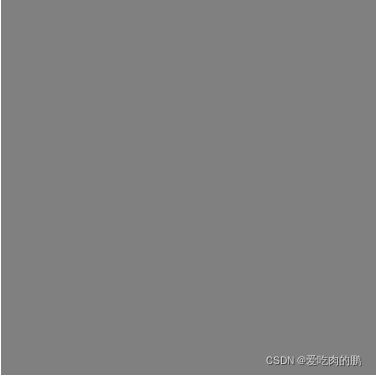【目标检测之数据集预处理】继承Dataset定义自己的数据集【附代码】
在深度学习训练中,除了设计有效的卷积神经网络框架外,更重要的是数据的处理。在训练之前需要对训练数据进行预处理。比如在目标检测网络训练中,首先需要划分训练集和测试集,然后对标签、边界框等进行处理后才能送入网络进行训练,本文章以VOC数据集格式为例,对数据集进行预处理后送入目标检测网络进行训练。【附代码】
目录
划分训练集和测试集
继承Dataset函数
读取图像和bbox信息
图像缩放
bbox处理
完整的代码:
划分训练集和测试集
annotation_path = r'2007_train.txt'
with open(annotation_path, encoding='utf-8') as f:
lines = f.readlines()
np.random.seed(10101)
np.random.shuffle(lines)
np.random.seed(None)
val = 0.1
num_val = int(len(lines)*val)
num_train = len(lines) - num_val定义自己的数据集处理代码,数据处理主要继承torch.utils.data中的Dataset函数【注意:这里只是预处理数据集,还不是加载数据集,加载预处理后的数据集需要用torch.utils.data中的DataLoader进行加载】
class MyDatasets(Dataset):
def __init__(self, train_line, image_size, is_train):
super(MyDatasets, self).__init__()
self.train_line = train_line # 训练集的长度
self.train_batches = len(train_line) # 总batch数量
self.image_size = image_size # 图像大小
self.is_train = is_train # 是否训练继承Dataset函数
继承Dataset父类函数主要修改两个成员函数,def __len__(self):【用来返回数据集长度】和def __getitem__(self, index):【用来返回数据集和标签】。注意后者是一个可迭代的【看形参index就可知道】。
def __len__(self): # 返回数据集的长度
return self.train_batches
def __getitem__(self, index): # 返回数据集和标签
lines = self.train_line
if self.is_train:
img, y = self.get_data(lines[index], self.image_size[0:2], random=False)我用自己的数集来演示一下上述两个函数的输出结果【前提是已经划分好数据集了,将标签文件转为txt文件】
self.train_batches输出结果
In [1]: self.train_batches
Out[1]: 799
self.train_line输出结果
In [2]: lines = self.train_line
Out[3]:
['E:\\VOCdevkit/VOC2007/JPEGImages/23.jpg 3
7,27,134,209,0 233,1,387,210,0 20,220,167,414,0 258,226,348,413,0\n',
'E:\\VOCdevkit/VOC2007/JPEGImages/263.jpg
110,83,401,407,0\n',
'E:\\VOCdevkit/VOC2007/JPEGImages/117.jpg
205,115,342,329,0\n',
···········································
可以看出self.train_line是将txt文件中的数据进行进行了读取VOCdevkit/VOC2007/JPEGImages为路径23.jpg图片名称,37,27,134,209,0 233,1,387,210,0 20,220,167,414【bbox信息】,0【类,该图像中的类别】,代码中的lines类型是列表
定义数据集处理函数:
def get_data(self, annotation_line, input_shape):
line = annotation_line.split()
image = Image.open(line[0]) # line[0]是图片路径,line[1:]是框和标签信息
iw, ih = image.size # 真实输入图像大小
h, w = input_shape # 网络输入大小
box = np.array([np.array(list(map(int, box.split(',')))) for box in line[1:]]) # 将box信息转为数组将上述lines【txt文件中数据集】放入get_data函数中,即对应的形参annotation_line。这里我只加从lines列表中载一张图像进行演示。
annotation_line.split()是将图像路径、图像名称、bbox和类别进行划分
所以line = annotation_line.split()的输出为:
In [5]: line
Out[5]:
['E:\\VOCdevkit/VOC2007/JPEGImages/23.jpg','37,27,134,209,0',
'233,1,387,210,0',
'20,220,167,414,0',
'258,226,348,413,0']
打开图片
image = Image.open(line[0]) # line[0]是图片路径,line[1:]是框和标签信息可以对图片进行显示一下给大家看看
image.show()
读取图像和bbox信息
iw, ih = image.size # 真实输入图像大小
h, w = input_shape # 网络输入大小
box = np.array([np.array(list(map(int, box.split(',')))) for box in line[1:]]) # 将box信息转为数组iw,ih指的是输入图像的真实大小
h,w指的是网络输入大小,比如SSD是300*300,yolo是416*416,这里我以网络输入300*300为例,即h = w = 300
In [9]: iw,ih=image.size
In [10]: iw,ih
Out[10]: (416, 416)
------------------------------------------------------------------h=w=300
box输出信息 :注意看下面的输出,这个数组或者说矩阵中,一共5列,从第一列到第四列是bbox信息,最后一列是类标签。并且在前四列中的bbox信息中,1和2列是bbox左上角坐标,3和4列是右下角坐标。这里非常重要,后面还要用到。
In [13]: box
Out[13]:
array([[ 37, 27, 134, 209, 0],
[233, 1, 387, 210, 0],
[ 20, 220, 167, 414, 0],
[258, 226, 348, 413, 0]])
因为我们的网络输入是300*300,但这里的图像实际大小为416*416,那么我们需要对原始图像进行缩放,使其适合我们的网络输入。
图像缩放
先计算一下缩放比例,也就是原始图像相对于输入图像大小,缩放后的图像不产生形变:
scale = min(w / iw, h / ih)
保证长或宽,符合目标图像的尺寸
nw = int(iw * scale)
nh = int(ih * scale)
dx = (w - nw) // 2
dy = (h - nh) // 2In [15]: scale
Out[15]: 0.7211538461538461In [18]: nw,nh
Out[18]: (300, 300)
image = image.resize((nw, nh), Image.BICUBIC) # 采用双三次插值算法缩小图像创建一个新的灰度图像,缩放后的图像可能不能满足网络大小,所以可以给周边补充一些灰度条。
new_image = Image.new('RGB', (w, h), (128, 128, 128))可以看一下这个新创造的图,new_image.show()
再将灰度条和裁剪后图合在一起
new_image.paste(image, (dx, dy))
image_data = np.array(new_image, np.float32)bbox处理
box_data = np.zeros((len(box), 5)) # 创建一个和bbox shape一样的全零矩阵Out[30]:
array([[0., 0., 0., 0., 0.],
[0., 0., 0., 0., 0.],
[0., 0., 0., 0., 0.],
[0., 0., 0., 0., 0.]])
因为前面已经对图像进行了缩放,那么相应的,缩放后的bbox也会发生改变,所以计算一下缩放后的bbox 【分别院box对前4列坐标信息进行缩放】
box[:, [0, 2]] = box[:, [0, 2]] * nw / iw + dx # 对原框x坐标缩放
box[:, [1, 3]] = box[:, [1, 3]] * nh / ih + dy # 对原y坐标进行缩放得到缩放后图像的bbox信息
array([[ 26, 19, 96, 150, 0],
[168, 0, 279, 151, 0],
[ 14, 158, 120, 298, 0],
[186, 162, 250, 297, 0]])
进一步处理坐标信息,防止缩放后坐标的溢出或者说出现负坐标
# 处理左上坐标,防止负坐标
box[:, 0:2][box[:, 0:2] < 0] = 0
# 处理右下坐标,防止超过输入边界
box[:, 2][box[:, 2] > w] = w # box[:, 2] > w是条件语句,意思是判断第2列坐标是否超过了w
box[:, 3][box[:, 3] > h] = h# 计算缩放后的框的尺寸
box_w = box[:, 2] - box[:, 0] # 第2列坐标-第0列坐标,可以得出box的w
box_h = box[:, 3] - box[:, 1]我这里的输出box_w,box_h各有4个值,是因为我原来标签中有4个边界框
In [40]: box_w,box_h
Out[40]: (array([ 70, 111, 106, 64]), array([131, 151, 140, 135]))
计算一下有效的边界框【有效的边界框是指box长度大于1】
box = box[np.logical_and(box_w > 1, box_h > 1)] # 逻辑与判断有效的边界框
box_data = np.zeros((len(box), 5))
# 将有效的边界框赋值给前面定义的全零box_data
box_data[:len(box)] = box现在我们再返回
def __getitem__(self, index):
if self.is_train:
img, y = self.get_data(lines[index], self.image_size[0:2], random=False)现在的img,y就是通过我们定义def get_data返回的结合,即上面输出的image_data和box_data
取出box坐标【不包含类的那一列】
boxes = np.array(y[:, :4], dtype=np.float32)In [49]: boxes
Out[49]:
array([[ 26., 19., 96., 150.],
[168., 0., 279., 151.],
[ 14., 158., 120., 298.],
[186., 162., 250., 297.]], dtype=float32)
进一步对box坐标进行处理,归一化处理
boxes[:, 0] = boxes[:, 0] / self.image_size[1]
boxes[:, 1] = boxes[:, 1] / self.image_size[0]
boxes[:, 2] = boxes[:, 2] / self.image_size[1]
boxes[:, 3] = boxes[:, 3] / self.image_size[0]In [55]: boxes
Out[55]:
array([[0.08666667, 0.06333333, 0.32 , 0.5 ],
[0.56 , 0. , 0.93 , 0.50333333],
[0.04666667, 0.52666664, 0.4 , 0.99333334],
[0.62 , 0.54 , 0.8333333 , 0.99 ]], dtype=float32)
获取boxes坐标比1小比0大的有效坐标
boxes = np.maximum(np.minimum(boxes, 1), 0)再将处理以后的box坐标矩阵和类别这一列进行拼接,得到完整的bbox信息【包含类标签】
y = np.concatenate([boxes, y[:, -1:]], axis=-1)In [59]: y
Out[59]:
array([[0.08666667, 0.06333333, 0.31999999, 0.5 , 0. ],
[0.56 , 0. , 0.93000001, 0.50333333, 0. ],
[0.04666667, 0.52666664, 0.40000001, 0.99333334, 0. ],
[0.62 , 0.54000002, 0.83333331, 0.99000001, 0. ]])
上面的y就是最终得到的bbox,可以看出前4列是边界框坐标信息,最后一列是类
img = np.array(img, dtype=np.float32) # 将图像转为数组
tmp_inp = np.transpose(img - MEANS, (2, 0, 1)) # tmp_inp的shape为(3,300,300)tmp_targets = np.array(y, dtype=np.float32) # 标签转数组--------------------------------------------------------------------------------------------------------------------------------
现在我们就得到了最终数据处理后的图像信息(包含了边界框坐标)和标签信息
完整的代码:
class MyDatasets(Dataset):
def __init__(self, train_line, image_size, is_train):
super(MyDatasets, self).__init__()
self.train_line = train_line
self.train_batches = len(train_line)
self.image_size = image_size
self.is_train = is_train
embed()
def get_data(self, annotation_line, input_shape, random=True):
line = annotation_line.split()
image = Image.open(line[0]) # line[0]是图片路径,line[1:]是框和标签信息
iw, ih = image.size # 真实输入图像大小
h, w = input_shape # 网络输入大小
box = np.array([np.array(list(map(int, box.split(',')))) for box in line[1:]]) # 将box信息转为数组
if not random:
# 裁剪图像
scale = min(w / iw, h / ih)
nw = int(iw * scale)
nh = int(ih * scale)
dx = (w - nw) // 2 # 取商(应该是留部分条状)
dy = (h - nh) // 2
image = image.resize((nw, nh), Image.BICUBIC) # 采用双三次插值算法缩小图像
new_image = Image.new('RGB', (w, h), (128, 128, 128))
new_image.paste(image, (dx, dy))
image_data = np.array(new_image, np.float32)
# 处理真实框
box_data = np.zeros((len(box), 5))
if (len(box) > 0):
np.random.shuffle(box)
box[:, [0, 2]] = box[:, [0, 2]] * nw / iw + dx # 对原框x坐标缩放
box[:, [1, 3]] = box[:, [1, 3]] * nh / ih + dy # 对原y坐标进行缩放
# 处理左上坐标,防止负坐标
box[:, 0:2][box[:, 0:2] < 0] = 0
# 处理右下坐标,防止超过输入边界
box[:, 2][box[:, 2] > w] = w
box[:, 3][box[:, 3] > h] = h
# 计算缩放后的框的尺寸
box_w = box[:, 2] - box[:, 0]
box_h = box[:, 3] - box[:, 1]
box = box[np.logical_and(box_w > 1, box_h > 1)]
box_data = np.zeros((len(box), 5))
box_data[:len(box)] = box
return image_data, box_data
def __len__(self): # 返回数据集的长度
return self.train_batches
def __getitem__(self, index): # 返回数据集和标签
lines = self.train_line
if self.is_train:
img, y = self.get_data(lines[index], self.image_size[0:2], random=False)
else:
img, y = self.get_data(lines[index], self.image_size[0:2], random=False)
boxes = np.array(y[:, :4], dtype=np.float32)
boxes[:, 0] = boxes[:, 0] / self.image_size[1]
boxes[:, 1] = boxes[:, 1] / self.image_size[0]
boxes[:, 2] = boxes[:, 2] / self.image_size[1]
boxes[:, 3] = boxes[:, 3] / self.image_size[0]
boxes = np.maximum(np.minimum(boxes, 1), 0)
y = np.concatenate([boxes, y[:, -1:]], axis=-1)
img = np.array(img, dtype=np.float32)
tmp_inp = np.transpose(img - MEANS, (2, 0, 1))
tmp_targets = np.array(y, dtype=np.float32)
return tmp_inp, tmp_targets
